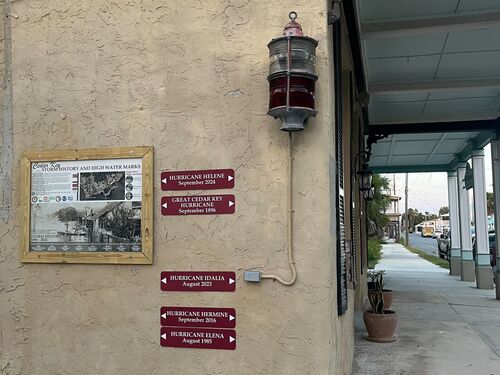Wildfire Recovery: Protecting health and safety during and after wildfires
Program News
By Ben Ulrich
Last update February 28, 2025
The January 2025 wildfires that devastated Southern California were the latest in a series of destructive wildfires from the past decade that have taken lives, destroyed homes, and exposed people to serious, long-term health risks. As in communities across the United States, including those in Hawai’i, Colorado, Tennessee, and other parts of California, Los Angeles area residents now begin the difficult process of rebuilding.
The 2022 National Academies report on the Chemistry of Fires at the Wildland-Urban Interface identifies ways to operate safely in burned environments, including the likely pollutants of concern produced by the fires, the routes of exposure, acute and chronic health effects, and ways to reduce exposure. Additional National Academies resources on other aspects of wildfires, including protecting health and safety, can be found at the end of this article.
Fire emissions and potential health effects
The Los Angeles fires, like the 2018 Camp Fire (the deadliest in California history, according to the California Department of Forestry and Fire Protection) and 2021 Marshall Fire (the most destructive by homes lost in Colorado history, according to the Colorado Division of Fire Prevention and Control), occurred at the “wildland-urban interface,” or WUI. WUI describes the area where humans and development meet or intermix with wildlands like forests, grasslands, and other undeveloped areas. A typical wildland fire will burn trees and grasses, resulting in well-understood byproducts like particulate matter of varying sizes, gases like carbon dioxide, methane, nitrogen oxides, carbon monoxide, and volatile organic compounds, and other potentially harmful substances. However, when homes, businesses, and cars enter the mix during WUI fires, additional pollutants are released. Vinyl siding, insulation, carpeting, upholstery, cars, and even clothing create numerous chemicals and emissions when burned.
A significant portion of these pollutants are in the “fire plume” — the smoke and chemicals that enter the air during a blaze — and can affect people far from the fire. While some pollutants travel large distances, many toxicants find their way into nearby buildings, soils, and water, creating both immediate and long-term risks. Chemical pollutants caused by WUI fires can lead to cancer, respiratory irritation and disease, immune suppression, reproductive and developmental toxicity, and a range of other acute and chronic effects. For individuals and groups who might already have an underlying condition or otherwise be at a higher risk, taking steps to minimize exposures and reduce risk is important.
Minimizing exposure and reducing future risk
According to the 2022 National Academies report, wearing a respirator or a filtering face mask is a common way to reduce inhalation exposure, especially to pollutants and toxicants in wildfire smoke. Though more information is needed on the effectiveness of NIOSH-certified N95 masks or their equivalents during wildland and WUI fires—their impact can vary based on how well they fit, how long they’re worn, and if the wearer has preexisting health conditions—the report found masks can provide a health benefit in polluted environments.
The report also describes how, when indoors, using air cleaners can help filter out particulate matter, chemicals, and other irritants, especially when set up in the main living and sleeping areas. Using ones that contain HEPA filters for fine particle removal, and avoiding the use of cleaners that generate ozone—another pulmonary irritant—can also be beneficial. Frequently wiping clean surfaces and avoiding generating more particulate matter by limiting use of air fresheners and certain cooking processes, like frying, can also cut down on indoor pollutants. A 2024 National Academies report, Health Risks of Indoor Exposures to Fine Particulate Matter and Practical Mitigation Solutions highlights many of these recommendations. of these recommendations.
Many people will come into physical contact with the wreckage of fires, so protecting against toxicant exposure through ingestion or skin contact is also essential, according to the 2022 National Academies report. The report recommends filtering water before drinking to remove contamination caused by fire emissions or degraded water lines, washing hands frequently, and ensuring children with frequent hand-to-mouth activity wash their hands. Additionally, showering after departing a fire scene can also cut down on skin exposure.
Finally, the 2022 National Academies report provides recommendations for ways to proactively mitigate the risk of wildfires for communities at the WUI, including more robust land management, building with protective buffers from flammable wildland areas, and constructing and furnishing homes with fire-resistant materials and ignition-resistant building practices. According to the report, such practices can reduce the risks and impacts from WUI fires.
Further Resources
Featured Publication
The Chemistry of Fires at the Wildland-Urban Interface
Consensus
·2022
Wildfires in America are becoming larger, more frequent, and more destructive, driven by climate change and existing land management practices. Many of these fires occur at the wildland-urban interface (WUI), areas where development and wildland areas overlap and which are increasingly at risk of de...
View details



